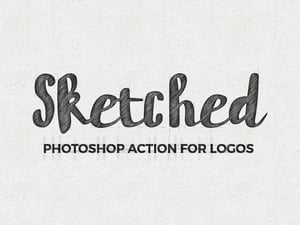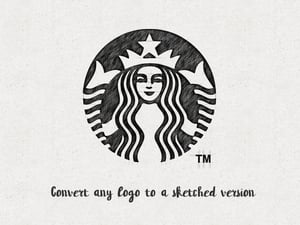
5 Designers Who Have Impacted Our Lives
Designers as Design Inspiration
Since the first time the "graphic design" term has been used, the years have give us a sustancial amount of talented persons, capables of see the needs and combine ideas to make the perfect solution, and in the way, make an impact in our lives. We’re going to take a look at just five of them in this post.
A brief introduction
Back in 1922, William Addison Dwiggins, a type designer, calligrapher, book designer and illustrator, uses for the first time the term “graphic design” to embrace all the activities (which with the time will be related to each other) in the profession: typography, illustration, signage, commercial photography, infographics, etc.
Since then (but mostly when the called “Creative Revolution” leaded by George Lois took place at the early XX century), the graphic design discipline give us an interrupted amount of brilliant minds, geniuses of creativity, capable to combine in a wisdom, original and intelligent way, different elements which together, accomplished the objective to send a clear message leaving no receiver indifferent.
But we have to be cautious when we establish who will be part of the design history, because we can go too far to the artistic side, leaving with no content the useful side of the design.
Here is a short, but useful review of just 5 influent designers (both for the general audience and designers) that had a direct or indirect impact in our lives and influenced the work of many designers.
Max Miedinger
The responsible person who created the typeface that became immensely popular in the late 1960s and 1970s due to its enormous influence within the so-called "International Typographic Style" or "Swiss Style" (particularly in corporate identities), one of the most important modernist movements of the twentieth century.
In the late 50’s, Miedinger receives a task from Edouard Hoffmann (Haas Foundry) in which he must modernize the sans-serif style of this typographic house. The type in question was Haas Grotesk and it was based on the Akzidenz Grotesk from the Berthold Foundry created at the end of the twentieth century. Miedinger redesigned this font which was named (at the beginning) Neue Haas Grotesk.
From 1957 to 1961 the typeface keeps his new name, but at that time the Stempel Foundry acquires the Haas Foundry (along with the original design rights), and the new owners decides to develop a complete serie of this typeface with different weights and name it “Helvetica” (meaning “Swiss” in Latin).
Massimo Vignelli
The figure of Massimo Vignelli will be remembered for a long time as well as most of his works, simple and very characteristic that stand out for "cleanliness" and "clarity" in their different forms.
A self-banded “information architect”, Vignelli studied at the University of Architecture in Milan and the Architecture University of Venice, but in the late 1950s and early 1960s, he made several visits to the United States, where he would definitely settle to form his creative studio together To his wife Lella. Since 1964, his works have received recognition and awards. Something that was taken to the screens through the documentary “Design is one”.
His best known design work is undoubtedly the New York Subway Map that was made with 2 other great designers: Beatriz Cifuentes and Yoshi Waterhouse. The main features of this work are the ease of reading and simplicity, and the innate ability of this design exponent to organize a big amount of information and expose it to the public in a simple and effective way.
But what many may not know is that in 1996 Vignelli worked on the corporate image of one of the most controversial companies in the world: Benetton, reaffirming the concept of "unity" through the claim "United Colors of Benetton”. Although he has also designed for Ford and American Airlines, it is necessary to mention the great work of signage design that he made in 1995 in the Guggenheim Museum of Bilbao (an icon of urban transformation).
Saul Bass
Bass is considered the introducer of rhythm and movement in graphic design, to the point of being considered a precursor of motion graphics. His name is part of the graphic design history, but it is also closely linked to the cinema history.
He is responsible for great title sequences such as “Psycho” and “Goodfellas”, but it is also the author of some of the best universally recognizable classic film posters such as “Anatomy of a Murder”, “Vertigo” and “The Man with the Golden Arm” among others. According to Bass, the films posters had to be represented by symbolisms and forms alluding to his more iconic scene.
In addition, he was also responsible for the logo design of big companies like AT&T, United Airlines and Warner Music Group among others; and on average, more than 30 years has passed before it has even been considered to redesign them.
Aleksandr Rodchenko
A designer who revolutionized the world of photography while the world was convulsed by another much less placid revolution, the Russian Revolution. Rodchenko wanted to release the photography of all the conventions and common points of view at the time, since he believed that to change the world, first he had to change the way we look at the world.
Collage and photomontages lead him to try different techniques and experiment. First, he did his work with the photos he found, but then he decided to buy his own camera and take the snapshots himself to use in the photomontages. His work gradually evolved from abstraction to concretion, and in the 30's his most recognized photographs are from sports activities or military parades.
Born in St. Petersburg, besides being a photographer, he was a sculptor, painter, graphic designer and one of the founders of Russian constructivism. Maybe as a consequence of the orderly society in which he lived, the line plays a primordial role in his work. The line, a reduced color palette and the rhythm of his works emphasize the sense of order of his images and help to transmit the social message he seeks. It often accompanies the line with oblique frames that bring dynamism to the final work, which incidentally, was the first time the world saw the combination of photography and graphic elements presented in a political way.
Neville Brody
In 1980, The Face magazine broke into one of the most classic cult publications that filled the alternative shelves of English fashion. Long after it was stopped producing, this magazine had an important name that contributed to mold its mystique: the graphic designer Neville Brody.
Brody showed his work through the pages of The Face, but also with another cult magazine called Arena. Founded by the same creator of The Face, Nick Logan, this magazine showed the graphic contribution of Brody from 1987 to 1990, when it ceased to exist, allowing Brody to become one of the most sought-after artists in the industry and, at the same time, one of the most loyal to the alternative circuit.
Formed in the London College of Printing, but with a strong influence of the Punk movement, besides having created a great amount of fonts, like FF Dirty One, FF Blur and FF Autotrace Nine, he worked for important companies such as Dom Perignon and Nike while remaining among the most remembered graphic designers that shaped the print subculture of the '80s in his native country, where he also worked creating the cover of the single "Just can’t get enough” by Depeche Mode in 1981.
Some final words
To conclude, I would like to mention that in addition to these 5 designers, there were (and still are) many more designers who have made their mark in our lives, such as Matthew Carter, Peter Saville, Milton Glaser, Paul Rand, Storm Thorgerson, Andreas Preis, Milton Glaser And David Carson among others; but the purpose here was simply to bring you, dear reader, a little of the design world and its protagonists and how these people impacted our lives and serve us every day as a source of inspiration in our work.

















Comments